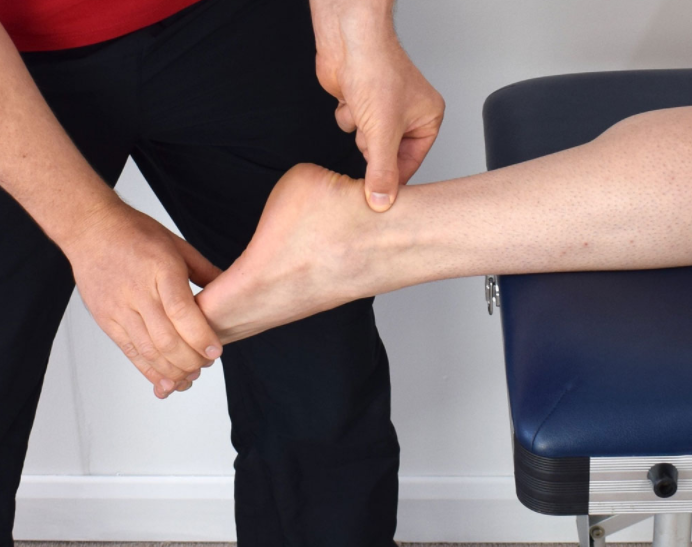
Common Achilles tendon injuries and how to prevent them
The Achilles tendon is the longest tendon in the body, connecting your heel bone to the calf muscles. Its size and position places it under increased strain during running, jumping, sudden acceleration or deceleration and risks rupturing if placed under too much stress in the wrong circumstances.
Achilles tendinopathy, Tendonitis, or tendinosis are other common names given to the overuse cause of pain and injury in the Achilles.
Achilles Tendonitis/Tendinopathy
The suffix ‘itis’ implies the area is suffering from inflammation. Previously called ‘tendinitis’ or ‘tendinosis’, sports physios have moved on from these terms as modern science has proven that inflammation is not the driving force in tendon overuse injuries. A more appropriate term is tendinopathy which means dysfunctional tendon health.
Achilles Tendinopathy is an overuse injury common amongst joggers, jumpers and other activities that require lower body stressful repetitive actions but is also found in people who are not active. Pain and stiffness associated with Achilles tendinopathy is sometimes worse in the morning and at the start of exercise, and could even disappear as you warm up. You may also notice the area is swollen and tender to touch.
Common causes of Achilles tendinopathy include:
Acute Achilles tendon pain generally develops when athletes abruptly increase activity (eg, runners who start training for a marathon).[1]
Achilles tendinopathy can also develop when people:
- Do the same exercises or activities such as jumping over and over (especially with poor technique)
- Don’t warm up before exercising
- Exercise in shoes that are worn-out, ill fitting or not made for exercise
- Have arthritis or a bone growth on the back of their heel bone – This can rub against the tendon and hurt it.
- Have tight hamstrings and calf muscles
Achilles tendon rupture
68% of all acute Achilles tendon ruptures occur during some form of athletic activity.[2] Eccentric movements put an enormous amount of stress on the tendon and stop-and-go sports like volleyball, basketball, soccer and squash are commonly involved.
If you have ruptured your Achilles tendon you will probably experience:
- A loud crack or popping sound at the moment of injury
- A sharp pain at the moment of rupture
- An inability to raise or flex your heel
- The back of your heel may swell
How can a sports physio treat Achilles injuries?
Achilles injuries rarely get better on their own. They may feel a little bit better with rest, but once you start doing an aggravating activity again it will become painful. Continuing to do aggravating activities despite pain or dysfunction is a surefire way to prolong your recovery time.
In good news though, around 80% of people with an acute Achilles injury will return to sport after treatment.[3]
The goals of physiotherapy are to treat any acute issues associated with your Achilles injury, look to identify predisposing factors, reduce pain and inflammation, and promote healing to restore the muscle and tendon.
Your physio will look to address the factors that caused the injury in the first place, to help reduce the risk of re-injury, commonly including:
- Abnormal lower limb mechanics (foot, knee and hip)
- Calf weakness
- Poor muscle flexibility
- Stiff ankle joints
- Training: inappropriate training load and recovery time between training sessions
- Poor footwear, footwear wearing out
Is there anything I can do to keep from getting tendinopathy again?
Yes. To lower the chance of getting Achilles tendinopathy again, you can:
- Warm up your muscles before you exercise. For example, if you run, you can warm up your muscles by jogging slowly and then slowly increasing your pace.
- Avoid sudden increases in your exercise or activity. When you begin a sport or activity, start off slowly. Over time, you can exercise harder and for longer periods of time.
- Avoid running or exercising outside in cold weather unless you are warm.
- Wear the correct and well fitting shoes for your sport
- Avoid running on hard surfaces.
Lane Cove Physio will also provide you with a targeted tendon rehabilitation program to make your Achilles stronger and more flexible. Finally, we will provide you with advice regarding when and how you can return to sport and/or activity. It is important to follow this advice to prevent recurrence, or worsening, of the tendon injury. Rehabilitation can be frustratingly slow but with perseverance it will get better!
[1]Holmes GB, Lin J. Etiologic factors associated with symptomatic achilles tendinopathy. Foot Ankle Int 2006; 27:952.
[2] Raikin SM, Garras DN, Krapchev PV. Achilles tendon injuries in a United States Population. Foot Ankle Int. 2013;34:475–480.
[3] Zellers JA, Carmont MR, Grävare Silbernagel K. Return to play post-Achilles tendon rupture: a systematic review and meta-analysis of rate and measures of return to play. Br J Sports Med 2016.



